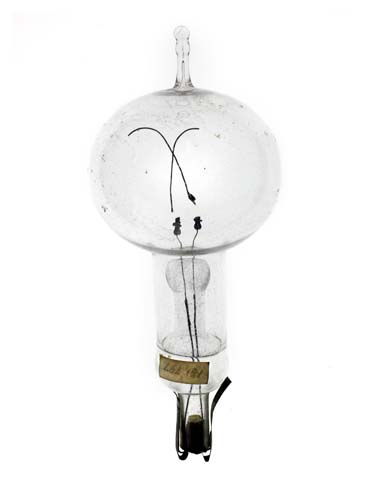Edison Light Bulb, 1879
Thomas Edison used this carbon-filament bulb in the first public demonstration of his most famous invention—the light bulb, the first practical electric incandescent lamp. The light bulb creates light when electrical current passes through the metal filament wire, heating it to a high temperature until it glows. The hot filament is protected from air by a glass bulb that is filled with inert gas. The demonstration took place at Edison’s Menlo Park, N.J., laboratory on New Year's Eve, 1879.
As the quintessential American inventor-hero, Edison personified the ideal of the hardworking self-made man. He received a record 1,093 patents and became a skilled entrepreneur. Though occasionally unsuccessful, Edison and his team developed many practical devices in his “invention factory,” and fostered faith in technological progress.



